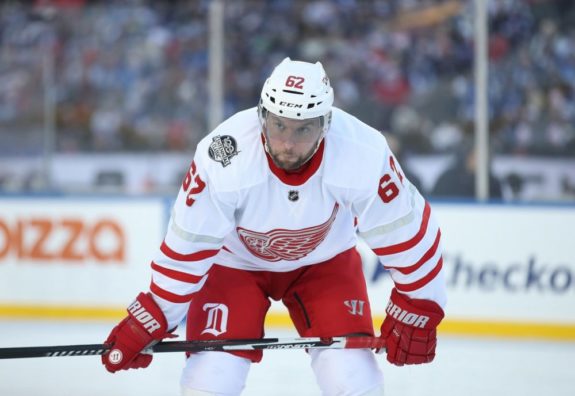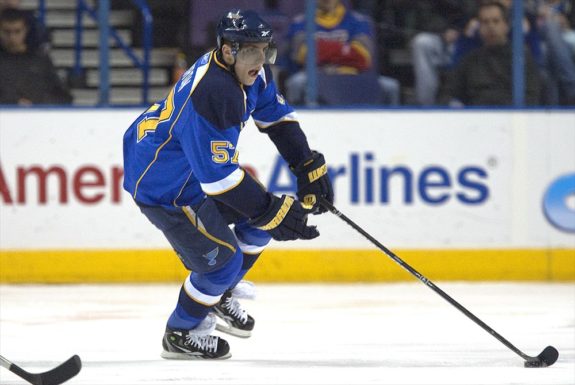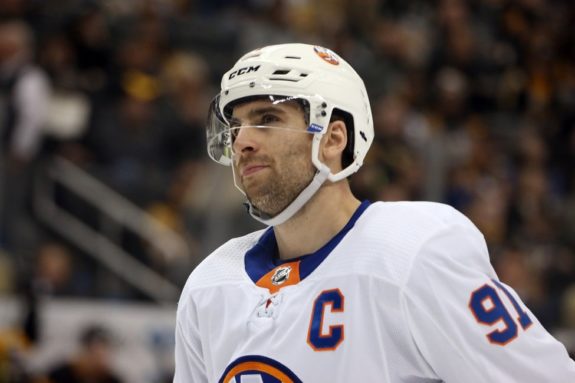Free agency is in full swing, and since July 1, there have been over 100 contracts handed out with a total value approaching $500 million. Given the age of most players when they reach unrestricted free agency, a large portion of these deals will be bad for the team by the end. However, there will also be some quality contracts that will maintain their values for the duration.
In order to determine which signings have been the most valuable, I am looking at two aspects. One is using cost-per-point as an evaluation by taking a player’s new cap hit and dividing it by his point total from last season. The other is determining the impact a player will have on his new team. For this, I am returning to the article I wrote that determined how many goals equal a win for each team.
I only looked at free agents who changed teams this offseason, not those who re-signed, and instead of using a player’s goals as I did in the original article, I am using the number of goals he created, a stat accessible on Hockey-Reference. With those housekeeping items out of the way, let’s move to the list.
Note: All salary information can be found on The Hockey Writers’ salary cap information page.
Thomas Vanek, Detroit Red Wings
The Detroit Red Wings signed veteran Thomas Vanek to a one-year, $3-million contract to have him don the winged wheel for the second time. After a down 2016-17 season, especially after the trade deadline, he returned to typical production levels last season. In 80 games split between the Vancouver Canucks and Columbus Blue Jackets, he had 24 goals and 56 points, both his highest since the 2013-14 campaign.

Just four of his goals occurred on the man-advantage, a career-low, while his 2.73 points-per-60 minutes (P/60) at 5-on-5 was the fourth-highest of his career. He played the fewest power play minutes per-game of his career last season, an indicator of why his production regressed on the man advantage.
Vanek’s $3-million cap hit is equal to $53,571 per-point, which would have been the lowest for a player on a standard contract with 24 goals in 2017-18 and the same holds true for players with 56 points. While he scored 24 goals, he created 22 of them, which would have provided the Red Wings with an additional four wins based on their 2017-18 goal differential.
His contract is great because he is a player who has shown consistency throughout his career, so it’s a low-risk investment and if Detroit is not competitive, they will flip him as a playoff rental.
David Perron, St. Louis Blues
Forward David Perron returns to the St. Louis Blues for his third career stint with the club this fall. This time it will be on a four-year, $16-million deal. His $4-million cap hit is a bargain for a player with 16 goals and a career-high 66 points in 70 games with the Vegas Golden Knights last season.

He averaged his highest ice time since 2013-14 but attempted the fewest shots per-60 and created the fewest high danger chances per-60 of his career. The same held true for the Golden Knights’ 5-on-5 shot control with Perron on the ice, which was at 48.4 percent last season, his lowest since 2014-15.
Of the four players with 66 points last season, his $56,818 per-point was the lowest and even based on his new cap hit, his $60,606 per-point would still be the lowest. The Blues scored the eighth-fewest goals last season and had a plus-four goal differential. Adding the 22 goals he created, Perron would have added four wins to St. Louis’ total.
Because of that, he should be a value signing for the team in the upcoming season. However, at 30 years old and with inconsistent play in recent seasons, his value over the life of the contract is questionable.
Michael Grabner, Arizona Coyotes
Speedy winger Michael Grabner has done a masterful job rebuilding his value in recent seasons. Early in his career, he had seasons of 34 and 20 goals and then scored a total of 45 goals between 2012-13 and 2015-16. He scored 27 goals in each of the past two seasons, one of only 24 players to score at least that many both seasons.

In 2017-18 with the New York Rangers and New Jersey Devils, Grabner had 27 goals and 36 points with no power play goals and two shorthanded tallies. He averaged his highest time on ice since 2011-12 but had the second-lowest 5-on-5 shots and high-danger chances per-60 of his career. Yet despite his low shot rates, he didn’t ride an elevated shooting percentage to success.
The Arizona Coyotes signed him to a three-year deal with a $3.35-million cap hit and his previous $1.65-million cap hit converted to the 15th-lowest cost-per-goal last season. Even with his new cap hit, his cost-per-goal would have ranked right behind James van Riemsdyk and Nikita Kucherov in the league.
Given Grabner’s speed and lack of reliance on power play scoring, his contract should hold its value for the duration. Plus, given the Coyotes minus-48 goal differential and an offense that was second-worst in the league, his 17 goals created last season would have added four wins to Arizona’s total.
Riley Nash, Columbus Blue Jackets
Center Riley Nash was due a sizable raise from the $900,000 he earned last season after he posted 15 goals and 41 points, both career highs. His $21,951 cost-per-point was the eighth-lowest among players on standard contracts. For the first time in his career, he will have a seven-figure cap hit in the upcoming season after the Blue Jackets signed him to a three-year deal with a $2.75-million cap hit.

Based on his new cap hit, his $67,073 cost-per-point would be in a group with Nathan MacKinnon, John Tavares, and Viktor Arvidsson. In 2017-18, Nash set career highs in control of 5-on-5 shots and goals and had his highest shooting percentage and even strength goals. He shot 13.3 percent while averaging his second-most shots per-60 at 5-on-5.
He created 15 goals last season, which would have added three wins to Columbus’s total. His wins contribution is lower than other free agents but his contributions aren’t exclusive to his offense. He is also a reliable two-way center who started in the offensive zone just 30.3 percent of the time at 5-on-5 and who has maintained a positive turnover margin every season.
John Tavares, Toronto Maple Leafs
Using his new $11-million cap hit and last season’s stats, John Tavares’ $130,952 cost-per-point isn’t as valuable as other free agents. What makes him valuable is the offensive impact he brings to the Toronto Maple Leafs. His 37 goals and 84 points last season were the second-most of his career, as were his 12 power-play goals. He achieved that production while averaging his third-lowest ice time and attempting his second-fewest 5-on-5 shots per-60.

He became a more versatile center by playing on the penalty kill more per-60 than ever before while playing on the power play less than normal. He still managed to average his most points and shots per-60 on the man advantage.
Not everyday you can live a childhood dream pic.twitter.com/YUTKdfMALl
— John Tavares (@91Tavares) July 1, 2018
By going to Toronto, he left money on the table, and his addition gives Toronto arguably the most center depth in the league. Additionally, the Maple Leafs tied for the second-most goals scored and had a plus-45 goal differential, so Tavares’s impact is naturally held in check based on the value of a win. Still, I found that he would have added five wins to their total, which tied him with James van Riemsdyk for the most added wins among free agents this offseason.
*All stats came from Hockey-Reference, Natural Stat Trick, and Corsica